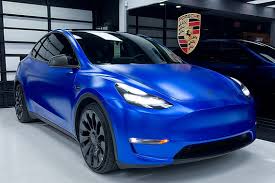|
|
|
|
|
|
|
 Understanding the Environmental Impact of Satin Vinyl WrapsIn recent years, the automotive industry has seen a surge in the popularity of vinyl wraps, with satin finishes being a favored choice for many car enthusiasts. These wraps offer a sleek, modern look that can transform the appearance of any vehicle. However, as environmental concerns become increasingly important, it is essential to examine the environmental friendliness of satin vinyl wraps. Vinyl wraps, including those with a satin finish, are made from polyvinyl chloride (PVC), a type of plastic known for its durability and flexibility. The production of PVC involves the use of chlorine and other chemicals, which can have significant environmental impacts. The manufacturing process releases harmful pollutants and greenhouse gases into the atmosphere, contributing to air pollution and climate change. Moreover, the disposal of vinyl wraps poses another environmental challenge. Unlike biodegradable materials, PVC does not break down easily and can persist in the environment for hundreds of years. This longevity means that when vinyl wraps are discarded, they contribute to the growing problem of plastic waste. Improper disposal can lead to these materials ending up in landfills or oceans, where they can harm wildlife and ecosystems.(Red Vinyl Wraps) To mitigate these environmental concerns, some manufacturers are exploring more sustainable alternatives to traditional PVC-based wraps. These include wraps made from biodegradable materials or those that use less harmful chemicals in their production. While these eco-friendly options are not yet mainstream, they represent a step toward reducing the environmental footprint of vehicle customization. Consumers also play a crucial role in minimizing the environmental impact of Satin Vinyl Wraps. By choosing wraps from companies that prioritize sustainability and by ensuring proper disposal or recycling, car owners can help reduce the negative effects associated with these products. Additionally, opting for wraps that have a longer lifespan can decrease the frequency of replacements, thereby reducing waste. In conclusion, while satin vinyl wraps offer aesthetic appeal and versatility for vehicle customization, their environmental impact cannot be overlooked. The production and disposal processes associated with these wraps present significant challenges that need addressing. As awareness grows and technology advances, it is hoped that more sustainable solutions will emerge, allowing car enthusiasts to enjoy the benefits of vinyl wraps without compromising on environmental responsibility.
|
